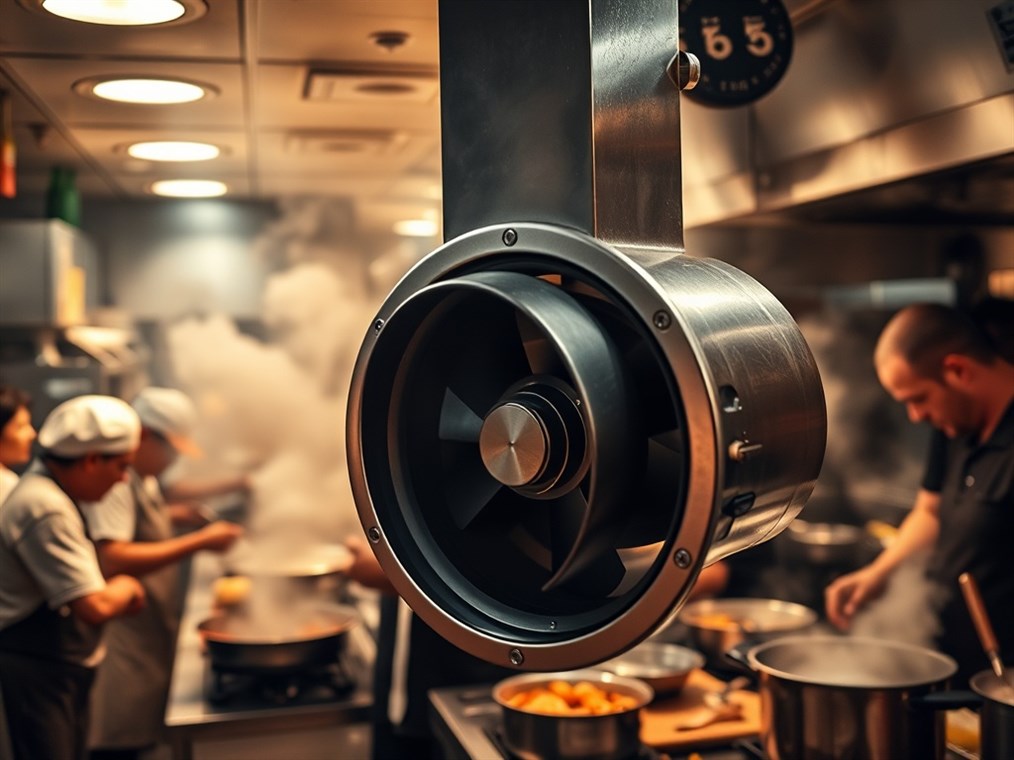Restaurant Exhaust Fans: Keeping Your Kitchen (and Business) Breathing Easy
Let’s face it, restaurant kitchens are chaotic, hot, and greasy places. And right in the thick of it, working tirelessly, is your exhaust fan. It’s the unsung hero that sucks away the heat, smoke, and those oh-so-tempting cooking smells, keeping your staff happy and your building safe. But here’s the thing: if you neglect that fan, you’re playing with fire – literally.
Why is a clean exhaust fan so crucial? Well, think of it this way: grease is a fire’s best friend. The National Fire Protection Association (NFPA) will tell you that most restaurant fires start on cooking equipment and then spread like wildfire (pun intended!) through the greasy exhaust system. Regular cleaning nips that risk in the bud. Plus, a clean system means better air quality for your team, preventing all sorts of nasty respiratory issues. Nobody wants to breathe in fumes all day!
Then there’s the compliance side of things. NFPA 96 sets the rules for keeping commercial kitchens safe, and they’re serious about exhaust systems. Messing around and ignoring these standards can lead to some seriously hefty fines and, worst-case scenario, a forced shutdown. And let’s not forget efficiency! A gunked-up fan has to work overtime, guzzling energy and costing you money. It’s like trying to run a marathon with a backpack full of bricks – not fun!
So, how often should you be tackling this greasy beast? It really depends on what you’re cooking and how much of it you’re churning out. But here’s a handy cheat sheet based on NFPA 96 guidelines:
- Monthly: If you’re rocking a wood-fired oven or anything that burns solid fuel, that system needs monthly attention.
- Quarterly: High-volume spots, like 24/7 diners or places that charbroil everything, need a quarterly scrub-down.
- Semi-Annually: Moderate cooking volumes? Aim for twice a year.
- Annually: For those low-volume gigs – think summer camps or the church kitchen – an annual clean should do the trick.
Pro tip: Don’t just rely on these guidelines. Give your exhaust system a peek every month to see how much grease is building up. You might need to clean more often!
Now, who should actually do the cleaning? While your kitchen staff can certainly wipe down the hood’s exterior as part of their daily routine, the deep cleaning that NFPA 96 demands is best left to the pros. These folks are trained, certified, and armed with the right equipment and powerful (but safe!) chemicals to get the job done right.
Okay, but what if you’re feeling brave and want to get a general idea of what’s involved? Here’s a simplified rundown:
- Safety Dance: First and foremost, kill the power! Disconnect that fan and use a lockout/tagout system to make sure nobody accidentally flips the switch while you’re elbow-deep in grease. And gear up! Gloves, eye protection, and a respirator are your friends.
- Prep Zone: Cover everything! Use plastic sheeting to protect your cooking surfaces and outlets from the inevitable grease splatter. Then, gather your arsenal: degreaser (the kitchen-safe kind!), a scraper, sponges, maybe a pressure washer (if you’re lucky!), and definitely a trash can.
- Fan TLC: Carefully remove the fan. You might need to unbolt it or unclip it, depending on how it’s mounted. Then, take it apart – blades, motor cover, the whole shebang. Scrape off as much hardened grease as you can, then slather everything in degreaser. Let it soak, then go to town with the pressure washer (if you’ve got one) or some good old-fashioned scrubbing. Rinse, rinse, rinse, and let everything air dry completely before putting it back together.
- Hood Hygiene: Don’t forget the hood itself! Give it a good scrub with degreaser. And those grease filters? Soak them in degreaser, rinse ’em clean, and let them dry.
- Reassemble and Rejoice: Once everything’s dry, put the fan back together, reinstall it, and give the whole system a once-over. Check for any damage, replace any worn parts, and then fire it up to make sure it’s running smoothly. A little stainless steel polish on the hood will give it that extra sparkle.
Now, let’s talk money. How much does it cost to have a pro handle this greasy chore? It varies, depending on the size of your kitchen and how often you need the service. Small restaurants might pay $200 – $500 per cleaning, while larger establishments could be looking at $1,500 – $3,000 or more. Get a few quotes to find the best deal.
Finally, remember that keeping your exhaust system clean is an ongoing effort. Clean those grease filters regularly (weekly or bi-weekly), wipe down surfaces daily, empty those grease traps, and schedule regular inspections.
Bottom line? A clean restaurant exhaust fan is non-negotiable. It’s about safety, health, compliance, and efficiency. So, take care of that unsung hero in your kitchen, and it’ll take care of you.

